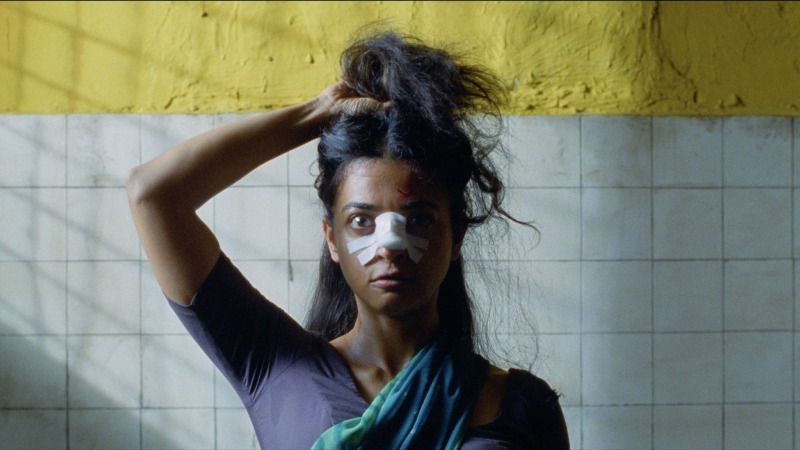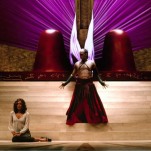Oddball Comedy Sister Midnight Thrives in the Dark

Uma (Radhika Apte) arrives in Mumbai the way a child might roll into summer camp, or finishing school: curious mainly about her own impending misery. She has been married to Gopal (Ashok Pathak), who, she later explains, she briefly thought of as her childhood sweetheart, a temporary self-deception she uses to make the marriage go down easily. He was really more of a friendly former acquaintance, and that now that friendliness is quickly fading. So are whatever temporary delusions Uma might have held about somehow turning into a functional housewife living in a single-room Mumbai shack. Her neighbor Sheetal (Chhaya Kadam) shows her the basics (and certainly not the joy) of cooking. Chiles and big hunks of things, she explains. Most men will think of a meal heavy in these things this as hearty and satisfying. She’s right, but no one gets much pleasure out of it.
Sister Midnight has the ingredients for a social-realist dirge about a woman’s domestic circumstances that, given the tiny accommodations, limited budget, and lack of transportation, don’t look vastly different from some minimum-security prisons. Writer-director Karan Kandhari, making his directorial debut, gives Uma the space to seethe, which makes her frustrations both vividly rendered and – sorry, Uma! – funny, in their mordant way. Maybe the apology should be directed to Gopal, who bears the brunt of her worst behavior. (And just when she seems to soften to him, things get vastly and unexpectedly worse.) Then again, Uma’s rage at him also feels justified. Even more than his new wife, he seems to assume that a functional marriage will somehow fall into place by instinct.
Anyway, back to the space: Kandhari often shoots Uma positioned center frame, or composes a static shot of an object (a door, say) before a person or part of a person enters and neatly performs an action (knocking, say). The Mumbai side streets are busy, but the camera placement is careful. His compositions will remind some viewers of the American filmmaker Wes Anderson. (Late in the movie, there’s even a series of train-related shots that, intentionally or not, mirror some images from Anderson’s India-set 2007 feature The Darjeeling Limited, and some stop-motion animation that recalls The Life Aquatic.) Although Sister Midnight shares with Anderson a certain deadpan wit chased with whimsical flourishes and sight gags, Kandhari also uses Anderson-style framing to very different and very clever effect. In Anderson’s films, it suggests the protagonists’ meticulously constructed worlds that they’ve curated in an effort to reshape their reality. Here, it often suggests a pre-existing world that Uma is powerless to control. The frames are already there; she can only do so much to alter them.
-

-

-

-

-

-

-

-

-

-

-

-

-

-

-

-

-

-

-

-

-

-

-

-

-

-

-

-

-

-

-

-

-

-

-

-

-

-

-

-








































